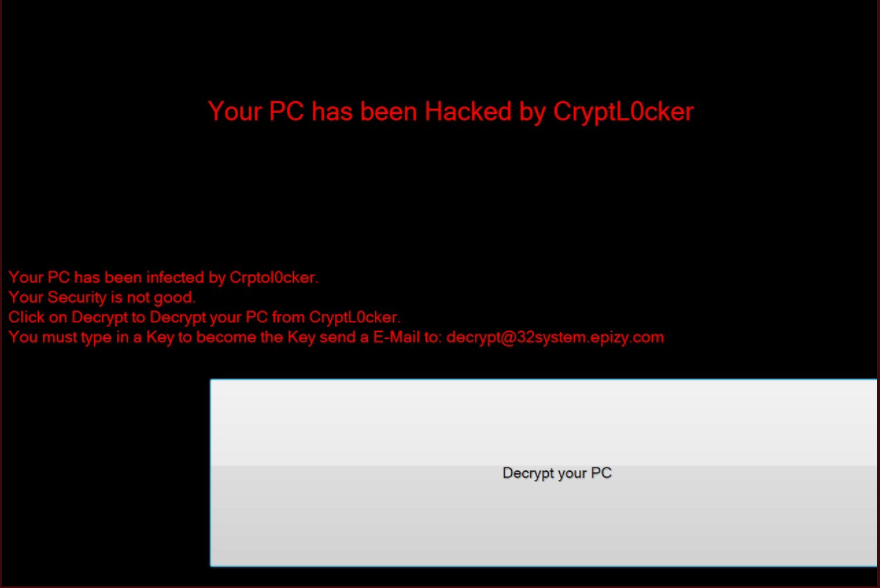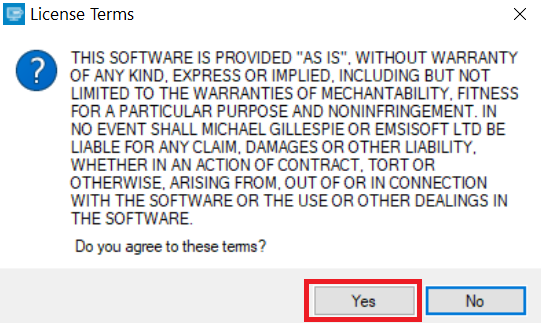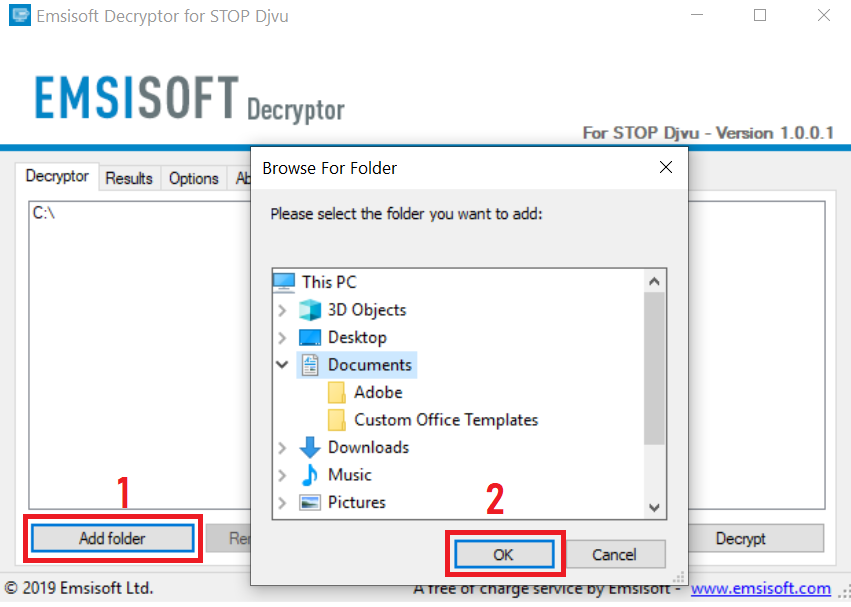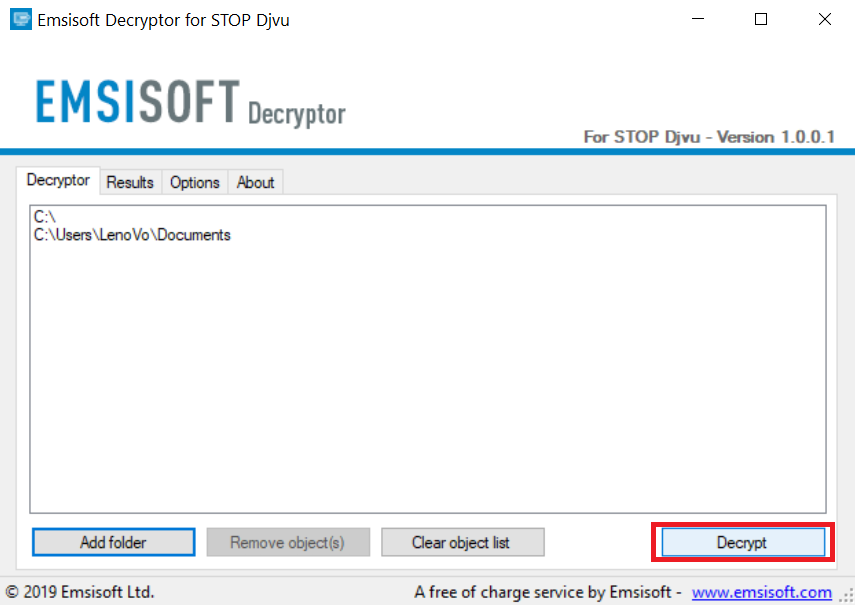
The Darkcomet virus is a malware that is still being developed. Test versions of it have been used in hacker attacks worldwide. DarkComet Lockscreen ransomware can indeed be dangerous. It is a type of malware that infects a computer system and locks the user out of their device, displaying a ransom note demanding payment in exchange for restoring access. The ransomware can encrypt files, restrict access to the operating system, and may even threaten to delete files or expose sensitive information if the ransom is not paid.
Dealing with ransomware attacks can be challenging and potentially result in data loss or financial loss if the ransom is paid without any guarantee of recovering the files or restoring access. It is crucial to take preventive measures to protect your computer system, such as regularly updating software, using strong and unique passwords, being cautious when opening email attachments or clicking on suspicious links, and maintaining up-to-date antivirus and anti-malware software.
Read our in-depth removal article to find out more about it.
DarkComet Summary
| Name | DarkComet |
| Type | Lockscreen Ransomware |
| Short Description | The DarkComet virus is a typical ransomware in development that is currently being made to target computer users worldwide. |
| Symptoms | The victims may be impacted with low overall system performance and will see the lockscreen instance once all built-in components have completed executing. |
| Distribution Method | Spam Emails, File Sharing Networks, Exploit Kits |
| Detection Tool |
See If Your System Has Been Affected by malware
Download
Malware Removal Tool
|
DarkComet Virus – How Did I Get It
The DarkComet virus code can be integrated into various files and distributed using different strategies. Usually the choice is dependent upon the scope of intended targets. At the moment there is no information available about the person or people behind it
Strains of the virus are being distributed through email messages. The hackers use social engineering techniques in order to coerce the computer users into interacting with the malware instance. The most common way is to send hyperlinks that lead to hosted instances of the virus. The criminals tend to acquire images and text from legitimate sites to manipulate the victims. The other way is to offer the virus code as file attachments. A related mechanism is to bundle the code in payloads such as the following:
- Malware Documents — The DarkComet virus code can be embedded into various types of documents: presentations, rich text documents and spreadsheets. Once they are opened the victims will be greeted by a notification prompt that asks them to enable the built-in scripts (macros). If this is done the malware is downloaded from a remote location and executed on the local system.
- Software Installers — The criminals can embed the Darkcomet malware code into software installers. Usually the targets are popular applications such as system utilities, creative apps and computer games.
The hackers behind the ongoing attack can create fake download portals that impersonate legitimate sites. The DarkComet virus strains are uploaded to them in their various forms. Other Internet places include file sharing networks such as BitTorrent trackers and other similar P2P software.
Another strategy is to utilize browser hijackers that represent dangerous plugins for web browsers. They are intended to redirect the users by fooling them into thinking that they are installing a useful addition. This is done by posting elaborate descriptions and utilizing fake user reviews and developer credentials. Usually they are made compatible with the most popular browsers: Mozilla Firefox, Google Chrome, Internet Explorer, Opera, Safari and Microsoft Edge.
DarkComet Virus – Technical Data
The DarkComet virus was recently discovered in an ongoing attack campaign. It appears to be a testing malware that does not seem to hold any code sourced from the famous malware families. Any follow-up versions may contain additional modules and components.
We expect to see an information gathering process that can be started once the infection has infiltrated the victim computer. It is usually programmed into extracting data that is usually classified into two groups:
- Personal Data — The engine is programmed into harvesting strings related to the victims identity: their name, address, geolocation, interests, passwords and account credentials.
- Anonymous Metrics — The DarkComet virus also retrieves data that is used for statistical purposes such as the data and time of infection, the installed hardware components and certain operating system values.
Using the gathered data the malware can execute a stealth protection component. It is intended to bypass anti-virus products, sandbox environments and other software that can interfere with its execution. Advanced strains can also be programmed into deleting themselves in order to evade detection.
The next step would be to cause system changes, they can be minor changes or critical operating system modifications intended to completely damage the operating system. There are several areas that the hackers can impact:
- Data Recovery — The malware code can delete all found Shadow Volume Copies which can severely impact data recovery. In such cases the victims can depend on a professional recovery solution, refer to our instructions for further instructions.
- Windows Registry — The virus can cause modifications to the entries in the Windows Registry. Changes to installed applications entries can result in problems with their execution. If operating-system related registry entries are impacted, then overall computer performance can suffer.
- Boot Options — The virus can hijack the boot menu and remove the possibility to engage the recovery startup menu.
The Darkcomet virus has been found to contain a batch script that can interact with a hacker-controlled server. Such connections can be used into delivering payloads or controlling the malware in a manner similar to Trojans.
Follow-up versions can be programmed with additional malware as well.
Once all predefined behavior has complete a screenlocker instance is launched which reads the following:
Your PC has been Hacked by CryptL0cker
Your PC has been infected by Crptol0cker.
Your Security is not good.
Click on Decrypt to Decrypt your PC from CryptL0cker.
You must type in a Key to become the Key send a -Email to: decrypt@32system.epizy.com
The captured samples so far do not provide a working lockscreen. As a result the application window can be closed safely without any consequences.
Updated versions of the Darkcomet virus can also come with a dangerous ransomware component that can be used to encrypt sensitive user data and extort the victims for a fee.
Remove DarkComet Virus and Restore Your Files
If your computer got compromised and is infected with the DarkComet ransomware virus, you should have some experience with removing viruses before tampering with it. You should get rid of the ransomware fast before it can spread further on the network and encrypt more files. The recommended action for you is to remove the ransomware completely by following the step-by-step instructions written below.
- Step 1
- Step 2
- Step 3
- Step 4
- Step 5
Step 1: Scan for DarkComet with SpyHunter Anti-Malware Tool



Ransomware Automatic Removal - Video Guide
Step 2: Uninstall DarkComet and related malware from Windows
Here is a method in few easy steps that should be able to uninstall most programs. No matter if you are using Windows 10, 8, 7, Vista or XP, those steps will get the job done. Dragging the program or its folder to the recycle bin can be a very bad decision. If you do that, bits and pieces of the program are left behind, and that can lead to unstable work of your PC, errors with the file type associations and other unpleasant activities. The proper way to get a program off your computer is to Uninstall it. To do that:


 Follow the instructions above and you will successfully delete most unwanted and malicious programs.
Follow the instructions above and you will successfully delete most unwanted and malicious programs.
Step 3: Clean any registries, created by DarkComet on your computer.
The usually targeted registries of Windows machines are the following:
- HKEY_LOCAL_MACHINE\Software\Microsoft\Windows\CurrentVersion\Run
- HKEY_CURRENT_USER\Software\Microsoft\Windows\CurrentVersion\Run
- HKEY_LOCAL_MACHINE\Software\Microsoft\Windows\CurrentVersion\RunOnce
- HKEY_CURRENT_USER\Software\Microsoft\Windows\CurrentVersion\RunOnce
You can access them by opening the Windows registry editor and deleting any values, created by DarkComet there. This can happen by following the steps underneath:


 Tip: To find a virus-created value, you can right-click on it and click "Modify" to see which file it is set to run. If this is the virus file location, remove the value.
Tip: To find a virus-created value, you can right-click on it and click "Modify" to see which file it is set to run. If this is the virus file location, remove the value.
Before starting "Step 4", please boot back into Normal mode, in case you are currently in Safe Mode.
This will enable you to install and use SpyHunter 5 successfully.
Step 4: Boot Your PC In Safe Mode to isolate and remove DarkComet





Step 5: Try to Restore Files Encrypted by DarkComet.
Method 1: Use STOP Decrypter by Emsisoft.
Not all variants of this ransomware can be decrypted for free, but we have added the decryptor used by researchers that is often updated with the variants which become eventually decrypted. You can try and decrypt your files using the instructions below, but if they do not work, then unfortunately your variant of the ransomware virus is not decryptable.
Follow the instructions below to use the Emsisoft decrypter and decrypt your files for free. You can download the Emsisoft decryption tool linked here and then follow the steps provided below:
1 Right-click on the decrypter and click on Run as Administrator as shown below:

2. Agree with the license terms:

3. Click on "Add Folder" and then add the folders where you want files decrypted as shown underneath:

4. Click on "Decrypt" and wait for your files to be decoded.

Note: Credit for the decryptor goes to Emsisoft researchers who have made the breakthrough with this virus.
Method 2: Use data recovery software
Ransomware infections and DarkComet aim to encrypt your files using an encryption algorithm which may be very difficult to decrypt. This is why we have suggested a data recovery method that may help you go around direct decryption and try to restore your files. Bear in mind that this method may not be 100% effective but may also help you a little or a lot in different situations.
Simply click on the link and on the website menus on the top, choose Data Recovery - Data Recovery Wizard for Windows or Mac (depending on your OS), and then download and run the tool.
DarkComet-FAQ
What is DarkComet Ransomware?
DarkComet is a ransomware infection - the malicious software that enters your computer silently and blocks either access to the computer itself or encrypt your files.
Many ransomware viruses use sophisticated encryption algorithms to make your files inaccessible. The goal of ransomware infections is to demand that you pay a ransom payment to get access to your files back.
What Does DarkComet Ransomware Do?
Ransomware in general is a malicious software that is designed to block access to your computer or files until a ransom is paid.
Ransomware viruses can also damage your system, corrupt data and delete files, resulting in the permanent loss of important files.
How Does DarkComet Infect?
Via several ways.DarkComet Ransomware infects computers by being sent via phishing emails, containing virus attachment. This attachment is usually masked as an important document, like an invoice, bank document or even a plane ticket and it looks very convincing to users.
Another way you may become a victim of DarkComet is if you download a fake installer, crack or patch from a low reputation website or if you click on a virus link. Many users report getting a ransomware infection by downloading torrents.
How to Open .DarkComet files?
You can't without a decryptor. At this point, the .DarkComet files are encrypted. You can only open them once they are decrypted using a specific decryption key for the particular algorithm.
What to Do If a Decryptor Does Not Work?
Do not panic, and backup the files. If a decryptor did not decrypt your .DarkComet files successfully, then do not despair, because this virus is still new.
Can I Restore ".DarkComet" Files?
Yes, sometimes files can be restored. We have suggested several file recovery methods that could work if you want to restore .DarkComet files.
These methods are in no way 100% guaranteed that you will be able to get your files back. But if you have a backup, your chances of success are much greater.
How To Get Rid of DarkComet Virus?
The safest way and the most efficient one for the removal of this ransomware infection is the use a professional anti-malware program.
It will scan for and locate DarkComet ransomware and then remove it without causing any additional harm to your important .DarkComet files.
Can I Report Ransomware to Authorities?
In case your computer got infected with a ransomware infection, you can report it to the local Police departments. It can help authorities worldwide track and determine the perpetrators behind the virus that has infected your computer.
Below, we have prepared a list with government websites, where you can file a report in case you are a victim of a cybercrime:
Cyber-security authorities, responsible for handling ransomware attack reports in different regions all over the world:
Germany - Offizielles Portal der deutschen Polizei
United States - IC3 Internet Crime Complaint Centre
United Kingdom - Action Fraud Police
France - Ministère de l'Intérieur
Italy - Polizia Di Stato
Spain - Policía Nacional
Netherlands - Politie
Poland - Policja
Portugal - Polícia Judiciária
Greece - Cyber Crime Unit (Hellenic Police)
India - Mumbai Police - CyberCrime Investigation Cell
Australia - Australian High Tech Crime Center
Reports may be responded to in different timeframes, depending on your local authorities.
Can You Stop Ransomware from Encrypting Your Files?
Yes, you can prevent ransomware. The best way to do this is to ensure your computer system is updated with the latest security patches, use a reputable anti-malware program and firewall, backup your important files frequently, and avoid clicking on malicious links or downloading unknown files.
Can DarkComet Ransomware Steal Your Data?
Yes, in most cases ransomware will steal your information. It is a form of malware that steals data from a user's computer, encrypts it, and then demands a ransom in order to decrypt it.
In many cases, the malware authors or attackers will threaten to delete the data or publish it online unless the ransom is paid.
Can Ransomware Infect WiFi?
Yes, ransomware can infect WiFi networks, as malicious actors can use it to gain control of the network, steal confidential data, and lock out users. If a ransomware attack is successful, it could lead to a loss of service and/or data, and in some cases, financial losses.
Should I Pay Ransomware?
No, you should not pay ransomware extortionists. Paying them only encourages criminals and does not guarantee that the files or data will be restored. The better approach is to have a secure backup of important data and be vigilant about security in the first place.
What Happens If I Don't Pay Ransom?
If you don't pay the ransom, the hackers may still have access to your computer, data, or files and may continue to threaten to expose or delete them, or even use them to commit cybercrimes. In some cases, they may even continue to demand additional ransom payments.
Can a Ransomware Attack Be Detected?
Yes, ransomware can be detected. Anti-malware software and other advanced security tools can detect ransomware and alert the user when it is present on a machine.
It is important to stay up-to-date on the latest security measures and to keep security software updated to ensure ransomware can be detected and prevented.
Do Ransomware Criminals Get Caught?
Yes, ransomware criminals do get caught. Law enforcement agencies, such as the FBI, Interpol and others have been successful in tracking down and prosecuting ransomware criminals in the US and other countries. As ransomware threats continue to increase, so does the enforcement activity.
About the DarkComet Research
The content we publish on SensorsTechForum.com, this DarkComet how-to removal guide included, is the outcome of extensive research, hard work and our team’s devotion to help you remove the specific malware and restore your encrypted files.
How did we conduct the research on this ransomware?
Our research is based on an independent investigation. We are in contact with independent security researchers, and as such, we receive daily updates on the latest malware and ransomware definitions.
Furthermore, the research behind the DarkComet ransomware threat is backed with VirusTotal and the NoMoreRansom project.
To better understand the ransomware threat, please refer to the following articles which provide knowledgeable details.
As a site that has been dedicated to providing free removal instructions for ransomware and malware since 2014, SensorsTechForum’s recommendation is to only pay attention to trustworthy sources.
How to recognize trustworthy sources:
- Always check "About Us" web page.
- Profile of the content creator.
- Make sure that real people are behind the site and not fake names and profiles.
- Verify Facebook, LinkedIn and Twitter personal profiles.


